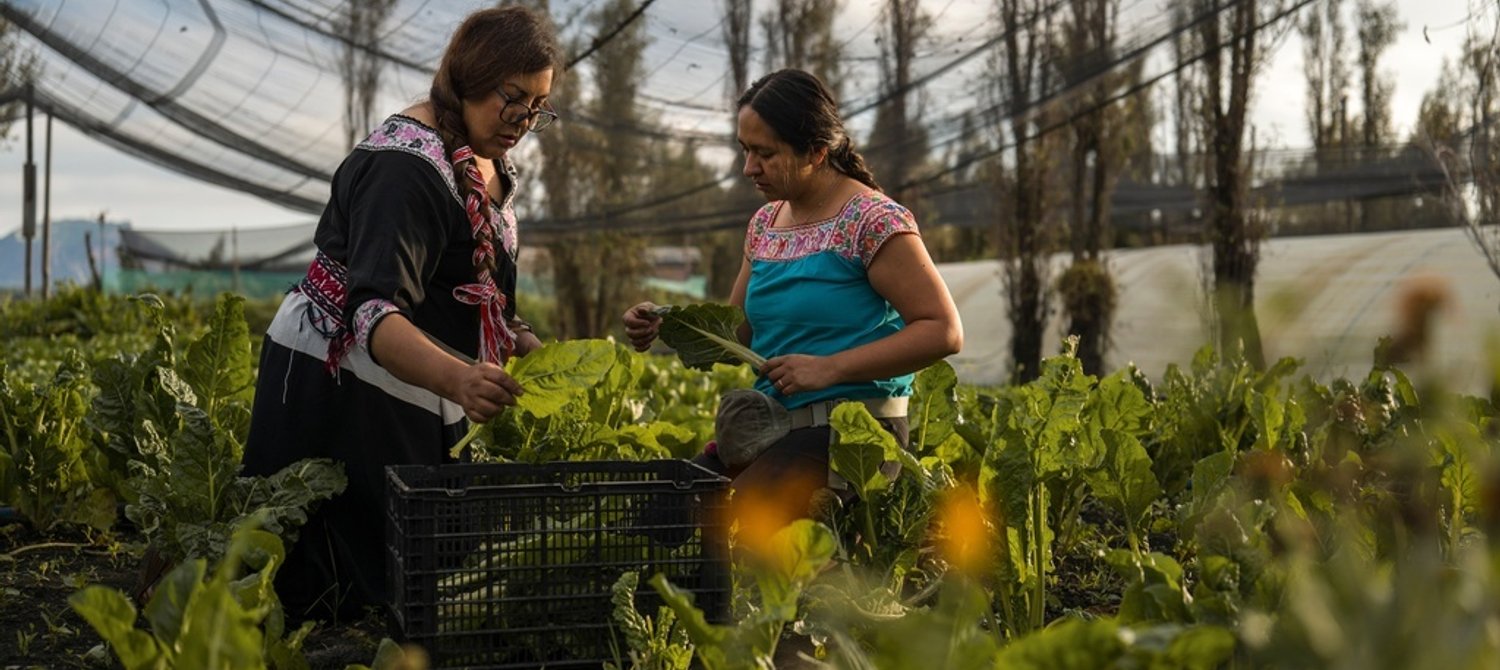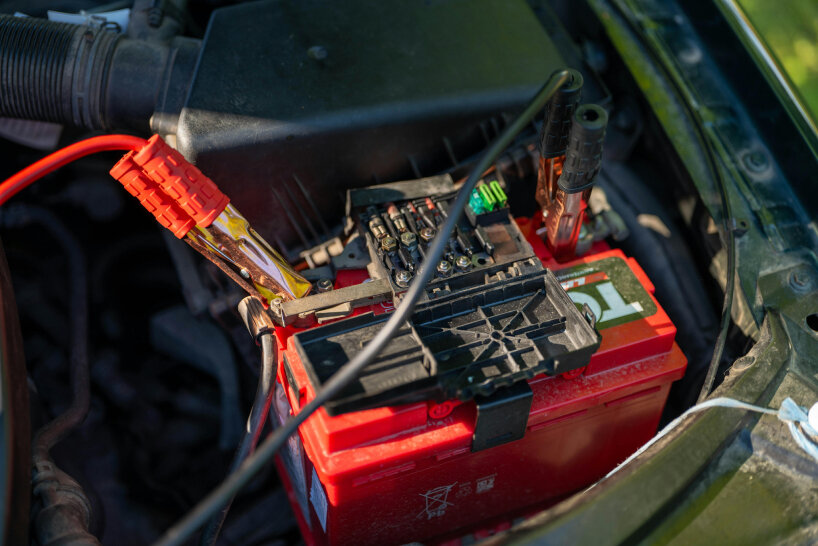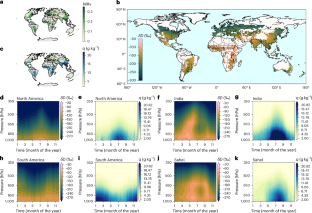Report on the Intersection of Food Systems, Climate Action, and Sustainable Development Goals
Introduction: The Imperative for Integrated Action Ahead of COP30
The resilience of global food systems and the pursuit of equitable climate action are intrinsically linked, forming a critical nexus for achieving multiple Sustainable Development Goals (SDGs). As the international community approaches COP30, it is imperative that the development of just and regenerative food systems remains a political priority. This report outlines the profound impact of climate change on food security, emphasizing the disproportionate effects on vulnerable populations and the urgent need for policy and financial commitments aligned with the 2030 Agenda for Sustainable Development.
- SDG 2 (Zero Hunger): Ensuring access to nutritious and affordable food is fundamental.
- SDG 13 (Climate Action): Addressing the climate crisis requires solutions that protect vulnerable communities and food sources.
- SDG 1 (No Poverty) & SDG 10 (Reduced Inequalities): Climate and food crises exacerbate poverty and inequality, particularly affecting the Global South, communities of color, and low-income households.
The Impact of Climate Change on Global Food Systems and Smallholder Farmers
Climate change directly undermines global food security and progress towards SDG 2. Rising temperatures, extreme weather events, and unpredictable climate patterns disrupt agricultural productivity, leading to increased food prices and diminished access for millions. This crisis disproportionately affects smallholder farmers, who are essential to local economies and food supplies.
Case Study: Smallholder Farmer Vulnerability
Smallholder farmers are critical for achieving several SDGs, yet they face significant challenges from climate change, threatening progress on goals related to poverty, economic growth, and hunger.
- Contribution to SDG 2: Smallholder farmers produce one-third of the world’s food supply, supporting local food security.
- Contribution to SDG 8 (Decent Work and Economic Growth): They are vital for rural employment and local economic stability. In many African cities, 70% of households source food from informal markets supplied by smallholders.
- Climate Impact Example (Cyclone Freddy, Malawi 2023):
- Over 2 million farmers lost crops and livestock.
- 440,000 acres of land were destroyed.
- Over 1.4 million livestock perished.
- Financial Disparity and SDG 17 (Partnerships for the Goals): Despite their crucial role, smallholder farmers receive only 0.8% of annual climate finance, creating a significant barrier to climate adaptation and resilience. This gap hinders the achievement of SDG 1 and SDG 13.
The Role of COP30 in Fostering Sustainable Food Systems
The upcoming COP30 in Brazil presents a pivotal opportunity to integrate food systems into the global climate framework. Brazil’s position as an agricultural leader with significant biodiversity offers a unique platform to champion sustainable practices and address challenges like deforestation, which directly impacts SDG 15 (Life on Land) and SDG 13.
Current food production models, such as cattle ranching responsible for 80% of Amazon deforestation, are unsustainable and accelerate climate change. COP30 must serve as a forum to connect actions on climate, hunger, poverty, and biodiversity, creating a cohesive strategy that advances multiple SDGs simultaneously.
Consequences of Inaction: Risks to the Sustainable Development Agenda
Failure to prioritize food resilience and sustainable food systems at COP30 will have severe consequences for the global community and the achievement of the SDGs.
- Escalation of Hunger and Food Insecurity (SDG 2): Without concerted action, the number of people facing acute food insecurity—over 295 million in 53 countries in 2024—will continue to rise, driven largely by extreme weather events.
- Impediments to Sustainable Transitions in Vulnerable Nations (SDG 10 & SDG 17): Many Global South countries lack the financial resources to transition to sustainable agriculture. Without international support, these nations, which are least responsible for the climate crisis, will be unable to adapt, deepening global inequalities and food insecurity.
- Abandonment of Smallholder Farmers (SDG 1, SDG 2, SDG 8): Without a substantial increase in targeted climate finance, smallholder farmers will remain unable to recover from climate shocks, jeopardizing their livelihoods and global food security. A proposed increase to at least $75 billion in climate finance is necessary to support their adaptation and resilience.
- Continuation of the Destructive Climate-Food Cycle (SDG 13 & SDG 15): Current food systems contribute significantly to environmental degradation. Transitioning to low-carbon, climate-resilient practices is essential. This requires a massive scaling of investment, as agriculture and food systems currently receive less than 5% of climate finance. An estimated $1.1 trillion is needed annually until 2030 to align the sector with the Paris Agreement goals.
Analysis of SDGs, Targets, and Indicators
1. Which SDGs are addressed or connected to the issues highlighted in the article?
-
SDG 1: No Poverty
The article directly connects climate change and food system instability to the exacerbation of global poverty. It highlights how climate shocks, like Cyclone Freddy, can push vulnerable smallholder farmers “deeper into poverty” by destroying their livelihoods and leaving them without financial resources to recover.
-
SDG 2: Zero Hunger
This is a central theme of the article. It discusses issues of food insecurity, hunger, and malnutrition, stating that “over 295 million individuals… experienced high levels of acute food insecurity.” The text emphasizes the need for “nutritious, affordable, and culturally appropriate food” for all and focuses on the critical role of smallholder farmers in global food production.
-
SDG 10: Reduced Inequalities
The article underscores that the impacts of climate change and food instability disproportionately affect the “most vulnerable — the Global South, communities of color, and those with the lowest income.” It points out the “social, economic, and environmental inequalities” within our food systems and the disparity in climate finance, where smallholder farmers receive a tiny fraction of the necessary funds.
-
SDG 13: Climate Action
The entire article is framed around the intersection of climate action and food systems. It details how climate change impacts agriculture through “increasing temperatures, extreme weather events, and unpredictable climate patterns.” It calls for climate adaptation, increased climate finance, and a transition to “low-carbon, climate-resilient” food systems to meet the Paris Agreement goals.
-
SDG 15: Life on Land
The article addresses this goal by discussing the environmental impact of current food systems. It specifically mentions that agricultural expansion, particularly “cattle ranching,” is responsible for “80% of the forest loss” in the Amazon rainforest, directly linking food production to deforestation and the loss of biodiversity.
2. What specific targets under those SDGs can be identified based on the article’s content?
-
Target 1.5: Build resilience of the poor to climate-related extreme events
The article emphasizes the vulnerability of smallholder farmers to climate shocks. The example of Cyclone Freddy in Malawi, which impacted over “2 million farmers,” illustrates the need to build resilience among the poor who lack the financial resources and savings to recover from such disasters.
-
Target 2.1: End hunger and ensure access to safe, nutritious and sufficient food
The article advocates for a world where “everyone should have access to nutritious, affordable, and culturally appropriate food.” It highlights the current failure to meet this target by citing that “over 295 million individuals… experienced high levels of acute food insecurity.”
-
Target 2.3: Double the agricultural productivity and incomes of small-scale food producers
The focus on smallholder farmers, who “produce one-third of the world’s food supply,” directly relates to this target. The article argues that without financial support and resources for climate adaptation, their livelihoods are at risk, which in turn threatens local and global food supplies.
-
Target 2.4: Ensure sustainable food production systems and resilient agricultural practices
The article calls for a transition to “sustainable farming practices” and “resilient agriculture systems.” It criticizes current systems that contribute to deforestation and climate change and advocates for “low-carbon, climate-resilient, and environmentally friendly practices” that can reduce emissions and support biodiversity.
-
Target 13.1: Strengthen resilience and adaptive capacity to climate-related hazards
The text repeatedly calls for resources to help vulnerable communities and smallholder farmers adapt to climate change. It states that without support, these farmers cannot withstand climate shocks, making “climate adaptation” a key topic for COP30.
-
Target 13.a: Implement the commitment to mobilize climate finance
The article heavily critiques the current state of climate finance for agriculture. It points out the massive funding gap, stating that smallholder farmers receive only “0.8% of climate finance” and that the sector as a whole receives less than “5%,” while calling for specific increases to “$75 billion” for farmers and “$1.1 trillion” for the entire system.
-
Target 15.2: Promote sustainable management of all types of forests, halt deforestation
This target is directly addressed through the example of Brazil, where the article states that the current food system “plays a significant role in the deforestation of the Amazon rainforest,” with “cattle ranching… responsible for 80% of the forest loss.”
3. Are there any indicators mentioned or implied in the article that can be used to measure progress towards the identified targets?
-
Indicator for Target 2.1 (Prevalence of severe food insecurity)
The article provides a direct measure: “In 2024, the Global Report on Food Crises (GRFC) indicated that over 295 million individuals in 53 countries and territories experienced high levels of acute food insecurity.”
-
Indicator for Target 13.a (Amount of climate finance provided)
The article provides several quantitative indicators of the current financial flows and needs:
- Smallholder farmers receive “just 0.8% of climate finance, each year.”
- Agriculture and food systems receive “less than 5% of climate finance.”
- The article calls for an increase in climate finance for smallholder farmers to “at least $75 billion.”
- It also states that an investment of “$1.1 trillion each year until 2030” is needed to achieve sustainable food production.
-
Indicator for Target 15.2 (Progress towards sustainable forest management)
A specific statistic is provided to measure the impact of agriculture on deforestation: “cattle ranching, for instance, responsible for 80% of the forest loss” in the Amazon.
-
Indicator for Target 1.5 / 13.1 (Number of people affected by disasters)
The article implies this indicator by detailing the impact of Cyclone Freddy in Malawi, which can be measured by the number of people and assets affected: “over 2 million farmers losing their crops and livestock,” “440,000 acres of land” destroyed, and “over 1.4 million livestock” lost.
4. Table of SDGs, Targets, and Indicators
| SDGs | Targets | Indicators |
|---|---|---|
| SDG 1: No Poverty | 1.5: Build the resilience of the poor and those in vulnerable situations and reduce their exposure and vulnerability to climate-related extreme events. | Impact of Cyclone Freddy on farmers in Malawi: “over 2 million farmers losing their crops and livestock,” “440,000 acres of land” destroyed, and “over 1.4 million livestock” perished. |
| SDG 2: Zero Hunger | 2.1: By 2030, end hunger and ensure access by all people… to safe, nutritious and sufficient food all year round. | Prevalence of acute food insecurity: “over 295 million individuals in 53 countries and territories experienced high levels of acute food insecurity.” |
| 2.3: By 2030, double the agricultural productivity and incomes of small-scale food producers. | Contribution of smallholder farmers to global food supply: “one-third of the world’s food supply.” | |
| 2.4: By 2030, ensure sustainable food production systems and implement resilient agricultural practices. | The article calls for a transition to “low-carbon, climate-resilient, and environmentally friendly practices.” | |
| SDG 10: Reduced Inequalities | Focus on the disproportionate impact on vulnerable nations and communities. | The article highlights that climate change and food instability hit “the Global South, communities of color, and those with the lowest income” the hardest. |
| SDG 13: Climate Action | 13.1: Strengthen resilience and adaptive capacity to climate-related hazards and natural disasters in all countries. | The need for resources for “climate adaptation and building resilient agriculture systems” for smallholder farmers. |
| 13.a: Implement the commitment… to mobilize climate finance. | – Smallholder farmers receive “just 0.8% of climate finance.” – Need for finance to increase to “at least $75 billion” for smallholders. – Total investment needed is “$1.1 trillion each year until 2030.” |
|
| SDG 15: Life on Land | 15.2: Promote the implementation of sustainable management of all types of forests, halt deforestation. | Rate of deforestation due to agriculture: “cattle ranching… responsible for 80% of the forest loss” in the Amazon. |
Source: globalcitizen.org







